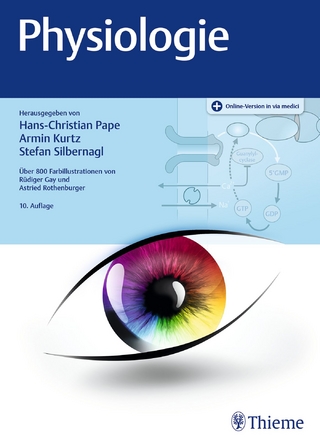
Computational Neuroscience
Chapman & Hall/CRC (Verlag)
978-1-58488-362-3 (ISBN)
- Titel ist leider vergriffen;
keine Neuauflage - Artikel merken
How does the brain work? After a century of research, we still lack a coherent view of how neurons process signals and control our activities. But as the field of computational neuroscience continues to evolve, we find that it provides a theoretical foundation and a set of technological approaches that can significantly enhance our understanding.
Computational Neuroscience: A Comprehensive Approach provides a unified treatment of the mathematical theory of the nervous system and presents concrete examples demonstrating how computational techniques can illuminate difficult neuroscience problems. In chapters contributed by top researchers, the book introduces the basic mathematical concepts, then examines modeling at all levels, from single-channel and single neuron modeling to neuronal networks and system-level modeling. The emphasis is on models with close ties to experimental observations and data, and the authors review application of the models to systems such as olfactory bulbs, fly vision, and sensorymotor systems.
Understanding the nature and limits of the strategies neural systems employ to process and transmit sensory information stands among the most exciting and difficult challenges faced by modern science. This book clearly shows how computational neuroscience has and will continue to help meet that challenge.
A THEORETICAL OVERVIEW
Introduction
Deterministic Dynamical Systems
Stochastic Dynamical Systems
Information Theory
Optimal Control
ATOMISTIC SIMULATIONS OF ION CHANNELS
Introduction
Simulation Methods
Selected Applications
Outlook
MODELING NEURONAL CALCIUM DYNAMICS
Introduction
Basic Principles
Special Calcium Signaling for Neurons
Conclusions
STRUCTURE BASED MODELS OF NO DIFFUSION IN THE NERVOUS SYSTEM
Introduction
Methods
Results
Exploring Functional Roles with More Abstract Models
Conclusions
STOCHASTIC MODELING OF SINGLE ION CHANNELS
Introduction
Some Basic Probability
Single Channel Models
Transition Probabilities, Macroscopic Currents and Noise
Macroscopic Currents and Noise
Behaviour of Single Channels under Equilibrium Conditions
Time Interval Omission
Some Miscellaneous Topics
THE BIOPHYSICAL BASIS OF FIRING VARIABILITY IN CORTICAL NEURONS
Introduction
Typical Input is Correlated and Irregular
Synaptic Unreliability
Postsynaptic Ion Channel Noise
Integration of a Transient Input by Cortical Neurons
Noisy Spike Generation Dynamics
Dynamics of NMDA Receptors
Class 1 and Class 2 Neurons Show Different Noise Sensitivities
Cortical Cell Dynamical Classes
Implications for Synchronous Firing
Conclusions
Generating Models of Single Neurons
Introduction
The Hypothalamo-Hypophysial System
Statistical Methods to Investigate The Intrinsic Mechanisms Underlying Spike Patterning
Summary and Conclusions
GENERATING QUANTITATIVELY ACCURATE, BUT COMPUTATIONALLY CONCISE, MODELS OF SINGLE NEURONS
Introduction
The Hypothalamo-hypophysial System
Statistical Methods to Investigate the Intrinsic Mechanisms Underlying Spike Patterning
Summary and Conclusions
BURSTING ACTIVITY IN WEAKLY ELECTRIC FISH
Introduction
Overview of the Electrosensory System
Feature Extraction by Spike Bursts
Factors Shaping Burst Firing In Vivo
Conditional Action Potential Back Propagation Controls Burst Firing In Vitro
Comparison with Other Bursting Neurons
Conclusions
LIKELIHOOD METHODS FOR NEURAL SPIKE TRAIN DATA ANALYSIS
Introduction
Theory
Applications
Conclusion
Appendix
BIOLOGICALLY-DETAILED NETWORK MODELING
Introduction
Cells
Synapses
Connections
Inputs
Implementation
Validation
Conclusions
HEBBIAN LEARNING AND SPIKE-TIMING-DEPENDENT PLASTICITY
Hebbian Models of Plasticity
Spike-Timing Dependent Plasticity
Role of Constraints in Hebbian Learning
Competitive Hebbian Learning Through STDP
Temporal Aspects of STDP
STDP in a Network
Conclusion
CORRELATED NEURONAL ACTIVITY: HIGH-AND LOW-LEVEL VIEWS
Introduction: the Timing Game
Functional Roles for Spike Timing
Correlations Arising from Common input
Correlations Arising from Local Network Interactions
When Are Neurons Sensitive to Correlated Input?
A Simple, Quantitative Model
Correlations and Neuronal Variability
Conclusion
Appendix
A CASE STUDY OF POPULATION CODING: STIMULUS LOCALIZATION IN THE BARREL CORTEX
Introduction
Series Expansion Method
The Whisker System
Coding in the Whisker System
Discussion
Conclusions
MODELING FLY MOTION VISION
The Fly Motion Vision System: An Overview
Mechanisms of Local Motion Detection: The Correlation Detector
Spatial Processing of Local Motion Signals BY Lobula Plate Tangential Cells
Conclusions
MEAN-FIELD THEORY OF IRREGULARLY SPIKING NEURONAL POPULATIONS AND WORKING MEMORY IN RECURRENT CORTICAL NETWORKS
Introduction
Firing-Rate and Variability of a Spiking Neuron with Noisy input
Self-Consistent Theory of Recurrent Cortical Circuits
THE OPERATION OF MEMORY SYSTEMS IN THE BRAIN
Introduction
Functions of the Hippocampus in Long-Term Memory
Short Term Memory Systems
Invariant Visual Object Recognition
Visual Stimulus-Reward Association, Emotion, and Motivation
Effects of Mood on Memory and Visual Processing
MODELING MOTOR CONTROL PARADIGMS
Introduction: The Ecological Nature of Motor Control
The Robotic Perspective
The Biological Perspective
The Role of Cerebellum in the Coordination of Multiple Joints
Controlling Unstable Plants
Motor Learning Paradigms
COMPUTATIONAL MODELS FOR GENERIC CORTICAL MICROCIRCUITS
Introduction
A Conceptual Framework for Real-Time Neural Computation
The Generic Neural Microcircuit Model
Towards a Non-Turing theory for Real-Time Neural Computation
A Generic Neural Microcircuit on the Computational Test Stand
Temporal integration and Kernel Function of Neural Microcircuit Models
Software for Evaluating the Computational Capabilities of Neural Microcircuit Models
Discussion
MODELING PRIMATE VISUAL ATTENTION
Introduction
Brain Areas
Bottom-Up Control
Top-Down Modulation of Early Vision
Top-Down Deployment of Attention
Attention and Scene Understanding
Discussion
| Erscheint lt. Verlag | 20.10.2003 |
|---|---|
| Reihe/Serie | Chapman & Hall/CRC Computational Biology Series |
| Zusatzinfo | 1000 equations; 17 Halftones, black and white; 3 Tables, black and white; 171 Illustrations, black and white |
| Sprache | englisch |
| Maße | 156 x 234 mm |
| Gewicht | 1020 g |
| Themenwelt | Medizin / Pharmazie ► Medizinische Fachgebiete ► Neurologie |
| Studium ► 1. Studienabschnitt (Vorklinik) ► Physiologie | |
| Naturwissenschaften ► Biologie ► Humanbiologie | |
| Naturwissenschaften ► Biologie ► Zoologie | |
| ISBN-10 | 1-58488-362-6 / 1584883626 |
| ISBN-13 | 978-1-58488-362-3 / 9781584883623 |
| Zustand | Neuware |
| Haben Sie eine Frage zum Produkt? |
aus dem Bereich


